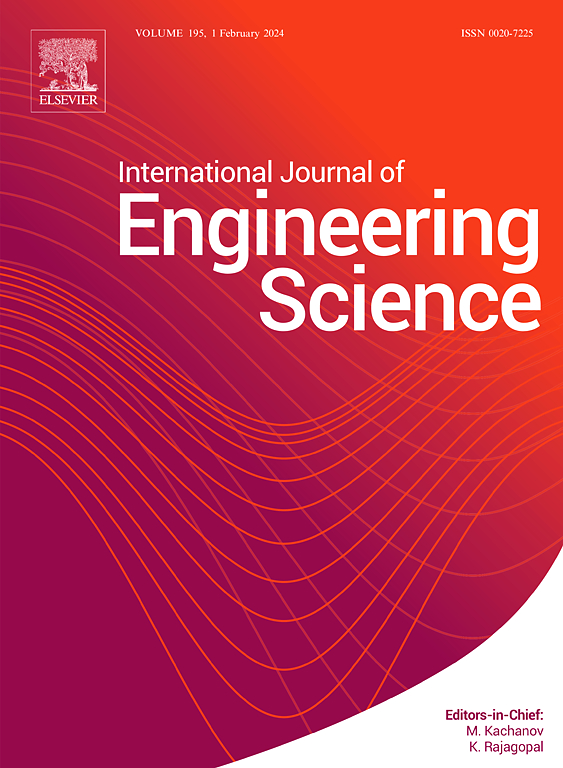Adhesion- and friction-induced suppression of buckling in thin spherical shells in contact with a rigid wall
IF 5.7
1区 工程技术
Q1 ENGINEERING, MULTIDISCIPLINARY
International Journal of Engineering Science
Pub Date : 2025-06-23
DOI:10.1016/j.ijengsci.2025.104329
引用次数: 0
Abstract
Understanding the contact mechanics of thin elastic shells is essential for a wide range of applications, from structural systems to soft robotics. This study focuses on how interfacial adhesion and friction influence the mechanical response of spherical shells in contact with a rigid plane, with particular attention to the suppression of buckling instabilities (or more precisely, snap-back instabilities, or snap-buckling). A comprehensive mapping of the transition between buckling and non-buckling regimes is carried out using the Finite Element Method. Numerical results are further validated through experiments, which demonstrate that for thin shells in contact with smooth surfaces – where interfacial adhesion and friction are high – buckling can be entirely suppressed, resulting in a more stable contact configuration.

粘着和摩擦对接触刚性壁的薄球壳屈曲的抑制
了解薄弹性壳的接触力学对于从结构系统到软机器人的广泛应用至关重要。本研究的重点是界面粘附和摩擦如何影响与刚性平面接触的球壳的机械响应,特别注意抑制屈曲不稳定性(或更准确地说,弹回不稳定性,或弹回屈曲)。利用有限元方法对屈曲和非屈曲状态之间的过渡进行了全面的映射。通过实验进一步验证了数值计算结果,表明薄壳与光滑表面接触时,界面黏附和摩擦力较大,可以完全抑制屈曲,从而获得更稳定的接触构型。
本文章由计算机程序翻译,如有差异,请以英文原文为准。
求助全文
约1分钟内获得全文
求助全文
来源期刊

International Journal of Engineering Science
工程技术-工程:综合
CiteScore
11.80
自引率
16.70%
发文量
86
审稿时长
45 days
期刊介绍:
The International Journal of Engineering Science is not limited to a specific aspect of science and engineering but is instead devoted to a wide range of subfields in the engineering sciences. While it encourages a broad spectrum of contribution in the engineering sciences, its core interest lies in issues concerning material modeling and response. Articles of interdisciplinary nature are particularly welcome.
The primary goal of the new editors is to maintain high quality of publications. There will be a commitment to expediting the time taken for the publication of the papers. The articles that are sent for reviews will have names of the authors deleted with a view towards enhancing the objectivity and fairness of the review process.
Articles that are devoted to the purely mathematical aspects without a discussion of the physical implications of the results or the consideration of specific examples are discouraged. Articles concerning material science should not be limited merely to a description and recording of observations but should contain theoretical or quantitative discussion of the results.
 求助内容:
求助内容: 应助结果提醒方式:
应助结果提醒方式:


